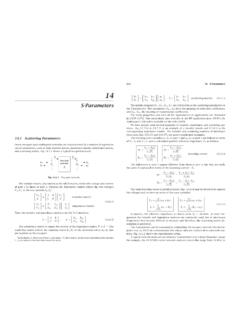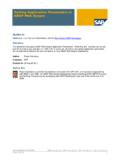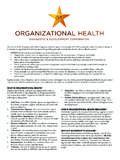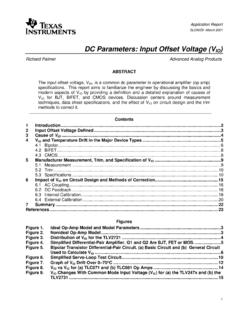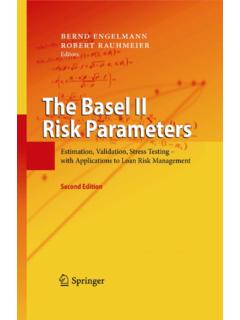Transcription of Changes to Three Default Kinetic Parameters in BioWin 3.0
1 Changes to Three Default Kinetic Parameters in BioWin This document explains the basis for Changes to Three model Kinetic Parameters in BioWin 3 that are incorporated in Version The Changes are with respect to: PARAMETER BW Default BW Default Units Menu Location Substrate (NO2) half sat. mgN/L Project/ Parameters / Kinetic /NOB Anoxic NO2 half sat. mgN/L Project/ Parameters / Kinetic /Switches NH3 nutrient half sat. mgN/L Project/ Parameters / Kinetic /Switches The document also briefly discusses the values for heterotroph DO switches, particularly for modeling oxidation ditch systems [Project/ Parameters / Kinetic /Switches].
2 Assimilative Denitrification of Nitrate/Nitrite to Ammonia for Synthesis In any of the growth processes in BioWin a small amount of synthesis nitrogen is incorporated in the new biomass. The amount is defined by the stoichiometric parameter 'N in biomass [mgN/mgCOD]'. The Default value for all biomass components is mgN/mgCOD. Given that the typical biomass COD/VSS ratio is , the typical N content of biomass is mgN/mgVSS. In BioWin 2 the preferred source of synthesis N was ammonia. If the ammonia concentration decreased to a low value, the growth process would switch from using ammonia to using nitrate, if available, as the synthesis N source.
3 In BioWin 3 only ammonia provides synthesis N. If the ammonia concentration decreases to a low concentration (and ammonia becomes limiting for growth), a model process for assimilative denitrification switches on to convert either nitrite or nitrate to ammonia as depicted in Fig. 1. The base rate is the product of the assimilation rate constant and the total organism COD. This base rate is modified to account for environmental conditions (off if ammonia is available, and selecting between nitrite and nitrate). The primary switch to turn on the assimilative process is controlled by the half saturation value 'NH3 nutrient half sat.
4 '. [Project/ Parameters / Kinetic /Switches]. The Default value in Version was mgN/L. {} + 3 SAT HALF NUTRIENT NH3 SAT HALF NUTRIENT NH3 NHKK rate veAssimilati Typically ammonia concentration may be low (and the assimilative process may switch on) in nitrifying systems. The ammonia concentration essentially is determined by the AOB Kinetic Parameters . If the value of the 'NH3 nutrient half sat.' is too high, then a problem of cycling nitrogen 'around-the-loop' may occur. That is, ammonia concentration is reduced by conversion to nitrite and nitrate through nitrification. The low ammonia concentration switches on the assimilative denitrification process, converting nitrite and/or nitrate back to ammonia, and so on.
5 The effect of this 'looping' does not impact predictions of oxygen demand because the assimilative processes account for oxygen recovery. However, cycling around-the-loop ( re-nitrifying ammonia) would incorrectly increase the masses of AOBs and NOBs. This problem does not occur if the 'NH3 nutrient half sat.' switch is significantly lower than the AOB and NOB half saturation values. Hence the suggestion to change the Default value of the 'NH3 nutrient half sat.' [Project/ Parameters / Kinetic /Switches] to mgN/L. Figure 1: Assimilative denitrification for synthesis N in BioWin 3.
6 NO3 NO2 NH3 Nitrification, Denitrification and SND in BioWin 3 versus BioWin 2 The diagram below shows the main pathways for nitrogen in nitrification and denitrification. The blue lines are for BioWin 2, and the black lines are for BioWin 3. This will be used to discuss the differences between the BioWin versions. Figure 2: Nitrification and denitrification main pathways in BioWin 2 (blue) and BioWin 3 (black). NO3 NO2 NH3 N2 BioWin 2 BioWin 2 is based on one-step nitrification and denitrification. That is: In nitrification ammonia is converted directly to nitrate; and In denitrification nitrate is converted directly to nitrogen gas.
7 BioWin 2 includes anoxic growth processes with either ammonia as the N source for synthesis or nitrate as the source if ammonia becomes limiting. BioWin 3 BioWin 3 is based on two-step nitrification and two-step denitrification. Nitrification in BioWin 3 In two-step nitrification ammonia is converted to nitrite by ammonia oxidizing bacteria (AOBs), and nitrite is converted to nitrate by nitrite oxidizing bacteria (NOBs). Formulation of the process rate equation is similar for each. [Note: These equations are simplified below; there are additional switches for synthesis P availability, etc.]
8 ]. AOBs: + + DOKDOZNHKNHAOB,DOAOB3 AOB,S3 AOB NOBs: + + DOKDOZNOKNONOB,DONOB2 NOB,S2 NOB The Default growth rates for AOBs and NOBs are and /day, respectively. This may appear to be in conflict with the observation that the first step is the growth-limiting one, because nitrite residuals are low in fully-nitrifying plants. However, these are biomass growth rates. The corresponding substrate utilization rates are the growth rates divided by the yield coefficient. Therefore, at the maximum rates: Ammonia utilization rate = / = Nitrite utilization rate = / = That is, the substrate utilization rates are in accordance with the understanding that the first step is the rate-limiting one.
9 Denitrification in BioWin 3 In two-step denitrification nitrate is first converted to nitrite (no nitrogen removal), and then nitrite is converted to nitrogen gas. The equations below illustrate the process rate equations for the two steps based on SBS utilization for growth of heterotrophs. Nitrate to Nitrite: + + + + The last term in the nitrate expression is there to 'slow down' the first step slightly to avoid substantial nitrite accumulation. Nitrite to Nitrogen: + + + Some factors to keep in mind when evaluating these expressions: 1.
10 One should recognize that this is a heterotrophic growth process; nitrate and nitrite are merely acting as electron acceptors. The rate of the process essentially is set by the part in curly brackets. 2. It is assumed that the heterotroph yield Y is the same for nitrate and nitrite as electron acceptor. This is based on observations by Koike & Hattori (1975). 3. There is little evidence in the literature whether heterotrophs will prefer nitrate over nitrite (or vice versa) as the electron acceptor if both are available, or whether they will be used simultaneously. 4. Each expression includes a term based on the electron acceptor equivalence.
